Change kJ to Cal with this fast kJ to calories converter. Simply adjust the slider or type a value to convert kilojoules to calories (kcal).
The conversion factor between a kilojoule (kJ) and a calorie (also called kilocalorie, kcal, or Cal) is 0.239, because each calorie contains 4.184 kilojoules. To do the reverse operation (convert calories to kilojoules), use the calculator below this one:
Convert Calories to kilojoules (Cal to kJ)
You can convert calories to kilojoules with the tool below, it is the reverse calculation of the kJ to Cal converter. Type in or slide to your required calorie amount, and the calculator will tell you how many kilojoules it is worth (kcal value multiplied by 4.184 equals kilojoule value):
Quick Reference: Common Cal/kJ Conversions
The top ten conversions made with our kilojoules to calories calculator are:
- 2000kJ to Calories
- 3000kJ to Calories
- 8700kJ to Calories
- 600kJ to Calories
- 1500kJ to Calories
- 5000kJ to Calories
- 500kJ to Calories
- 1200kJ to Calories
- 1100kJ to Calories
- 1800kJ to Calories
Look up some specific kJ to Cal conversions here:
- 1 kilojoule (kJ) converted to Calories (kcal)
- 10 kilojoules (kJ) converted to Calories (kcal)
- 100 kilojoules (kJ) converted to Calories (kcal)
- 1000 kilojoules (kJ) converted to Calories (kcal)
- 10000 kilojoules (kJ) converted to Calories (kcal)
- 1001 kilojoules (kJ) converted to Calories (kcal)
- 1002 kilojoules (kJ) converted to Calories (kcal)
- 1003 kilojoules (kJ) converted to Calories (kcal)
- 1004 kilojoules (kJ) converted to Calories (kcal)
- 1005 kilojoules (kJ) converted to Calories (kcal)
Here’s a table with some commonly sought calorie-to-kilojoules conversions for quick reference
Use this quick reference table to convert kj to calories and vice-versa:
| Calories/kcal/Cal | Kilojoules/kJ |
|---|---|
| 1000 | 4184 |
| 1 | 4.184 |
| 5 | 21 |
| 10 | 42 |
| 50 | 209 |
| 100 | 418 |
| 250 | 1046 |
| 300 | 1255 |
| 500 | 2092 |
| 2000 | 8368 |
| 2200 | 9205 |
| 3000 | 12552 |
| 5000 | 20920 |
After you’ve done the conversion, read on to learn about these measurement units we use to convert food to energy!
How to Change kJ to Calories on an Apple Watch
If you’re an Apple Watch user and want to see your calorie burn displayed in familiar units, such as calories instead of kilojoules (kJ), you’re in luck! The Apple Watch provides the option to switch between kJ and calories to suit your preference. Follow these simple steps to make the change:
Step 1: Open the Apple Watch App on your iPhone
Ensure that your Apple Watch is paired with your iPhone. Open the Apple Watch app from your iPhone’s home screen.
Step 2: Go to the My Watch Tab
Once the Apple Watch app is open, navigate to the “My Watch” tab located at the bottom of the screen.
Step 3: Select the Workout Option
Scroll down the “My Watch” tab and locate the “Workout” option. Tap on it to proceed.
Step 4: Tap on “Units”
In the “Workout” settings, you’ll find the “Units” option. Tap on it to access the unit preferences.
Step 5: Choose “Calories” instead of “Kilojoules”
Under the “Units” section, you’ll see the “Energy Unit” category. Tap on it and select “Calories” from the available options.
Congratulations! You’ve successfully changed the energy unit on your Apple Watch from kJ to calories. Now, when you track your workouts or monitor your activity, you’ll see the calorie burn displayed in familiar units.
Kilojoules to Calories (converting Energy to… also energy)
Kilojoules and calories are different measures of the same thing, but even professionals become confused when trying to use one or the other or both at the same time. It does not help that there is so much jargon and different wording for the same concepts! Is the Energy on your food label the same as Calories, kcal, kilojoules, large calories, Cal and kJ? Yes! Here’s why:
[lwptoc]
Why Calories and Kilojoules?
Why do nutrition labels on food packages measure energy in kilojoules (kJ) instead of Calories (kcal, or Cal)? Are they really the same thing? Why does it seem that there are thousands of kJ in foods but only hundreds of calories? Some people say kilocalories (kcal), whilst others say calories. Yet others insist on capitalising the “C” in in the word Calorie.
How is is possible that some converters give wildly different results when changing kilojoules to calories compared to others? Why do we call ourselves Calorie Counter Australia instead of Kilojoule Counter Australia? So many questions, let’s see some answers!
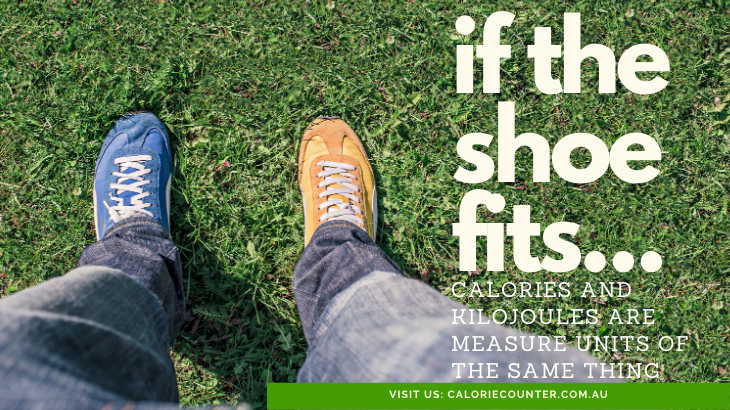
Different units measure the same thing!
To be clear, for our purposes, both calories and kilojoules refer to the same thing: energy, the ability to do work. Work is movement. Yes, this is the sort of thing school kids learn in Physics class.
“Kilojoule”, and “calorie”, describes the amount of movement which food allows us to do! Want to know how this affects a healthy body weight? Read our home page to get a more detailed explanation of the concept.
Why do food labels use kJ?
Australian government regulations and standards call food energy “kilojoules” (abbreviated to “kJ”). It is a public health guide requirement. However, this was not always the case, because from 1812 to the 1970’s, “calories” or “Cal” were used instead.
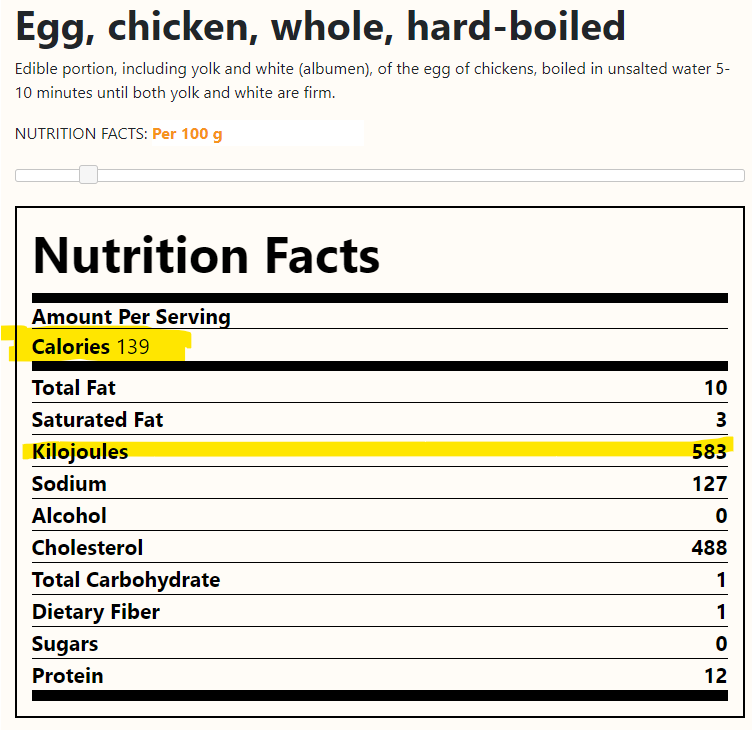
The switch was just another one of the things that changed when we adopted the SI metric measurement system. Parliament passed the Australian Metric Conversion Act in 1970, and government agencies therefore followed through shortly thereafter. From then on, kids were taught kJ rather than Cal.
That is why packaging labels list kJ instead of Cal today.
We still use them!
We still use calories instead of kilojoules for two main reasons:
Reason 1 – for most of our nation’s history, calories is the word most people used (and still use). Even people born after 1974 when the big changes happened have stubbornly clung to the old system. A difference, which makes no difference, is not a difference!
Reason 2 – cultural transmission. Australia and New Zealand are arguably the only significant English-speaking countries to have officially opted for kJ over kcal. That’s 30 million people supposedly saying they eat “kilojoules”, versus 400 million eating “calories”. As a result of almost every book, movie, TV show, podcast, webcast, song and article using “calories” rather than “kilojoules”, we do the same. Healthy people are very focused on them!
Watch the music video “Kaluli” at the bottom of this page. This massive hit from China is about the health conscious performers’ futile attempt to avoid calories (“kaluli”). Tellingly, the Chinese word for food energy, derived from English, is “kaluli” rather than “kilojuli”.
From this example of pop culture and many others, we can see that the word has seeped deeply into the world’s culture, whereas “kilojoules” has not.

Scientists use Calories
Furthermore, even the international scientific community has stubbornly refused to give up the calorie. Despite the global adoption of the SI system for science research, it seems that the current method in chemistry is to use kilocalories rather than kilojoules.
Food energy is measured by using a device called a bomb calorimeter. There is an entire specialisation in science known as calorimetry. The World Health Organisation talks about Daily per Capita calorie supply, rather than Daily per Capita kilojoule supply.
When is a calorie a kilocalorie?
Just as there are one thousand joules (J) in a kilojoule (kJ), there are one thousand calories (cal) in a kilocalorie (kcal). In other words, both the “old” system of measurement and the newer joules system use decimals.
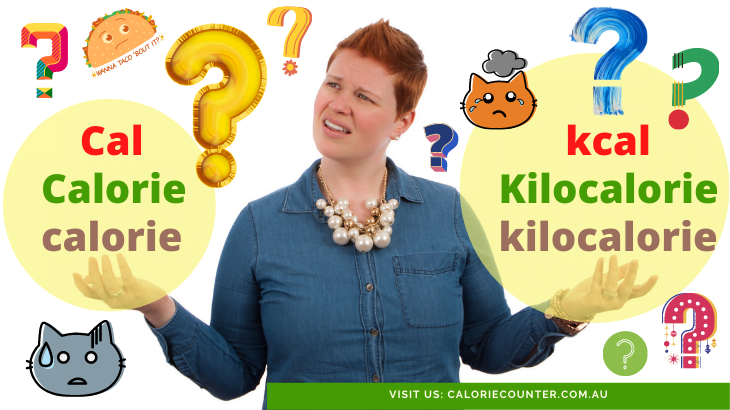
Here comes the the tricky part: the generally accepted convention is to call kilocalories “Calories”, with an uppercase “C”, whilst calories (one thousandth of a kilocalorie) keep their lowercase “c”. The two meanings often get mixed up and people do not use a capital “C”, even when they mean kilocalories rather than calories. The abbreviation for Calories/kilocalories is “kcal” or “Cal” whereas the abbreviation for calories is “cal”.
How many kilojoules in a calorie? Conversion Confusion!
This is why some health tools seem to offer wildly different results, depending on whether or not the users are expecting to see kilocalories. Trying to convert 1,200 calories with one of those converters gives you the result 5 kilojoules, which is obviously wrong (5kJ is what is in one third of a gram of Weet-Bix).
To make things even more confusing, when most people talk about calories, they really mean kilocalories! That is, kcal or Cal rather than cal. You’re on safe ground to assume that whenever the word “calorie” or the abbreviation “cal” is commonly used, the true meaning is kilocalories (kcal/Cal).
Convert kilojoules to Calories Infographic
An infographic showing the kJ to Cal conversion formula:
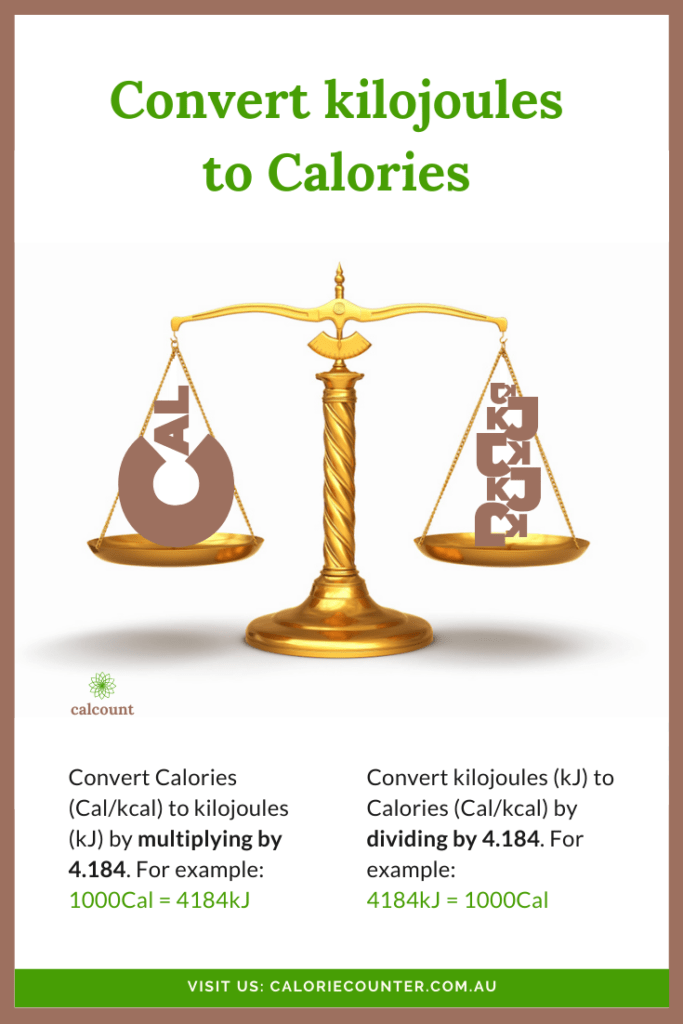
How to convert kJ to Calories?
The infographic above explains the formula to perform the kJ to calorie conversion. As you can see, the formula to change kilojoules to calories is quite simple. Since one Cal is equal to 4.184 kJ, you just need to divide the kilojoule value by 4.184 to get the Cals equivalent. Dividing by 4.184 is the same as multiplying by 0.239.
The practical formula is:
E (Cal) = E (kJ) x 0.239
Don’t worry, there is no need to whip out your pocket calculator, just use our converter!
kJ to Cal General rule of thumb
Sometimes, you will hear people say that, as a general guide, just divide/multiply by 4 to get the calorie or kilojoule count. At Calorie Counter Australia, we insist on using the more precise 4.184 conversion rate, because 0.184 is over 4% of 4.184. Whilst it may not sound like much, consider that 4% of a typical daily energy intake could easily be 100 Calories. That’s about the amount contained in a medium-sized banana.
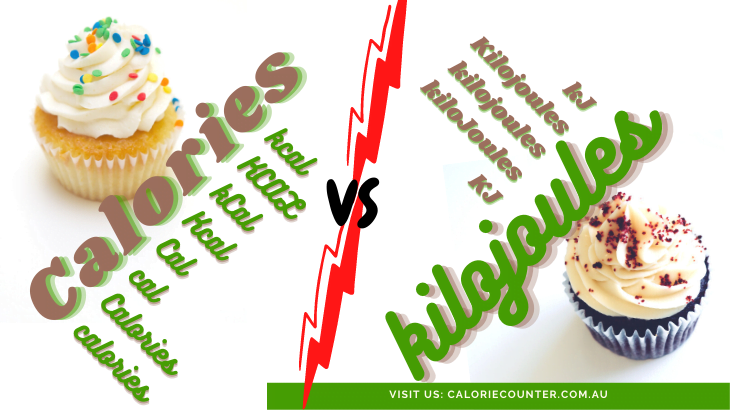
Cal and kJ in Macros
Most of our energy comes from the macronutrients (macros), namely carbohydrates (including sugar), fat, and protein in food we eat. Each of these macros contain the same type of energy, but in different quantities. Protein provides 4 calories per gram, same as carbs which give 4 per gram, whilst fat releases 9 kcal per gram. This equates to 38kJ/g for fat, and 17 kilojoules per gram for protein and carbohydrates.
| Macronutrient | Calories per 1 gram | Kilojoules per 1 gram |
| Fat | 9 | 38 |
| Protein | 4 | 17 |
| Carbohydrate | 4 | 17 |
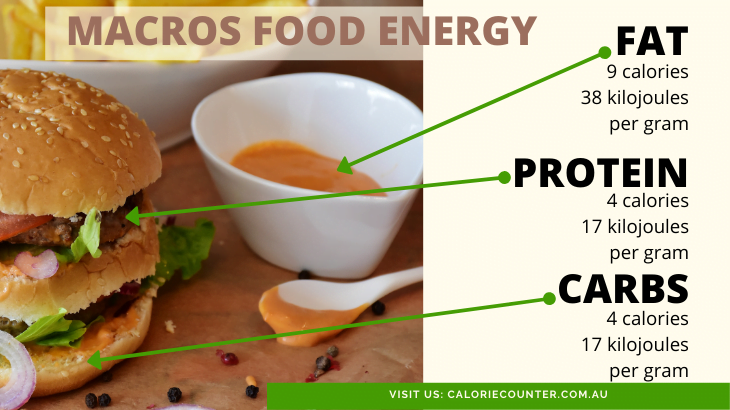
Besides the conversion (1 kcal = 4.814kJ), there is no difference in the food energy value in terms of kcal and kJ.
Kcal VS kJ: Does it Really Matter?
Having covered the difference between kilojoules and calories, and figured out how to swap them, we can answer the question: does it matter which one we use? In theory, since both are standard units which measure energy, it ultimately should not matter. The most important aspect of both kilojoules and calories is that we can use either to record and compare what we consume (or plan to consume) at any given time. Your choice will probably come down to these factors:
Availability
All physical nutrition labels in Australia list energy in kJ, and some list both kilojoules and Calories. Most digital (English language) resources list energy in Calories, and some list both. If you get most of your food health information from physical labels, the kJ seems to be the way to go. If you get most of your nutrition information from digital sources, then kcal probably works better.
Convenience
How easy is it for you to use the label to understand how much energy there is in each food? The nutrition label on packaged foods lists kilojoules per “serve” and per 100g. Can you mentally or electronically (with the aid of a digital app) use the label effectively, on a day-to-day basis? Can you perform the same task more easily using digital alternatives to the nutrition label? If you find the digital option to be more convenient, you will probably want Calories for reasons outlined above.
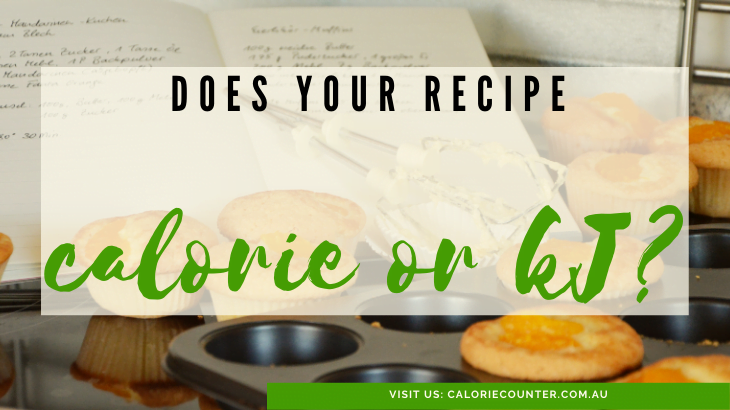
Convertibility
Is it easy to convert units between kilojoules and Calories? How hard is to find a printed cross-reference table, or online conversion tool, or perform a mental calculation? If it is easy to switch between Cal and kJ and vice-versa, then perhaps either are equally appealing.
Recipes
What units are usually listed in your recipe book, website or app? It is easier to become comfortable with the predominant unit of measure over time, rather than having to do conversions for each prepared meal or individual ingredients.
Gym Equipment
There is more to consider than just the food we eat. Modern gym equipment often have “smart” panels which measure energy burned during your workout. Does the equipment display kcal, kJ, or either? These days, getting healthy means quantifying workouts in a precise way.
All usage factors aside, it is most important to understand what both mean. Whichever unit of measure you opt for, use it to compare your choices and monitor your food energy intake. Use our Calorie Tracker to do both, all you need is a free calcount account.
The Calorie In Popular Culture
The word “calorie” has seeped deeply into our global culture, in ways that the word “kilojoule” has not. Don’t believe us? See what the cool kids are singing about: